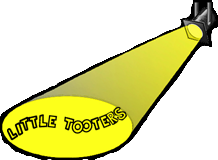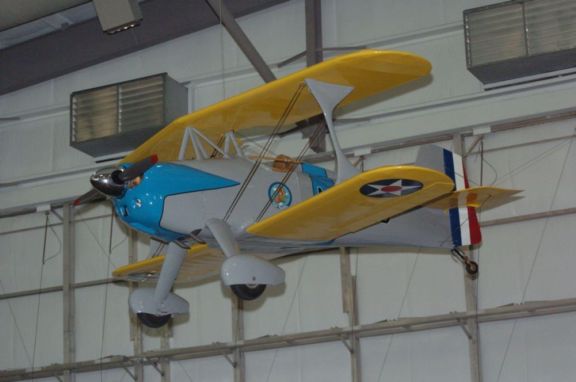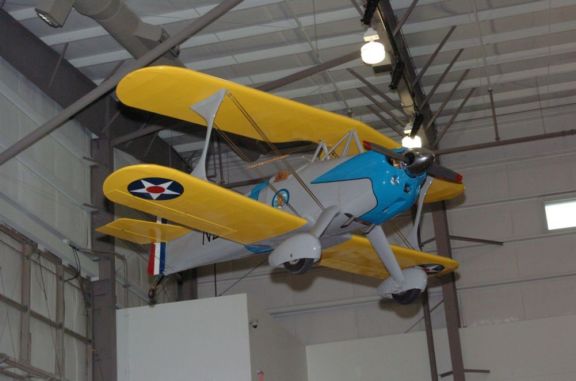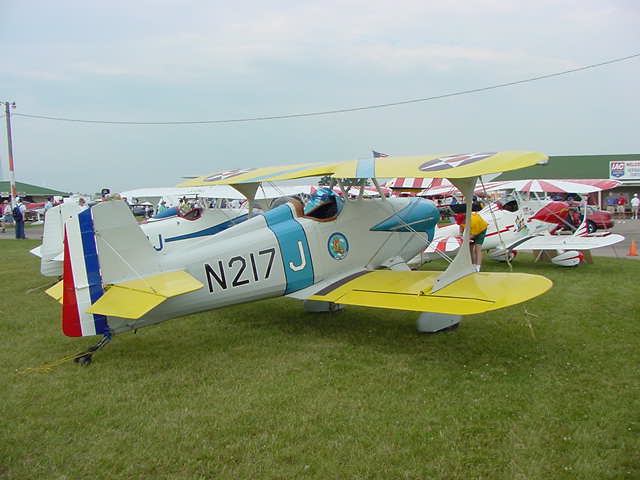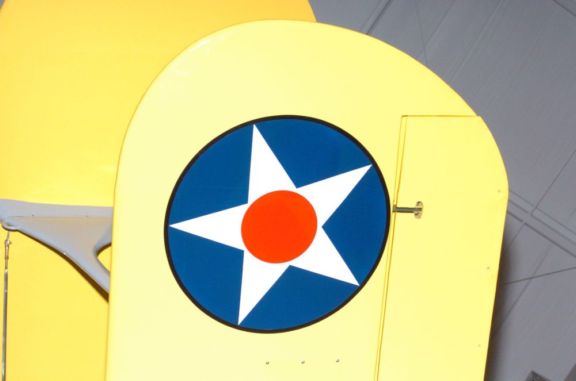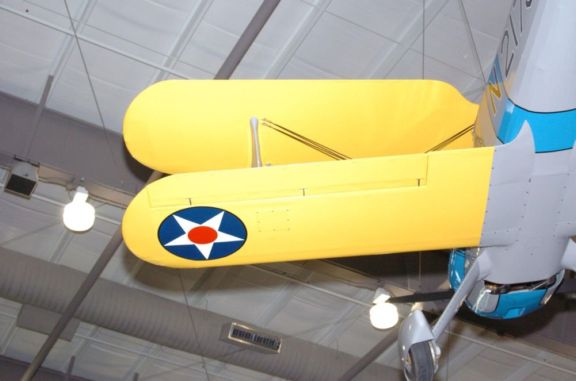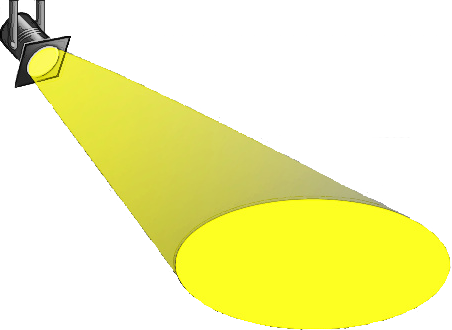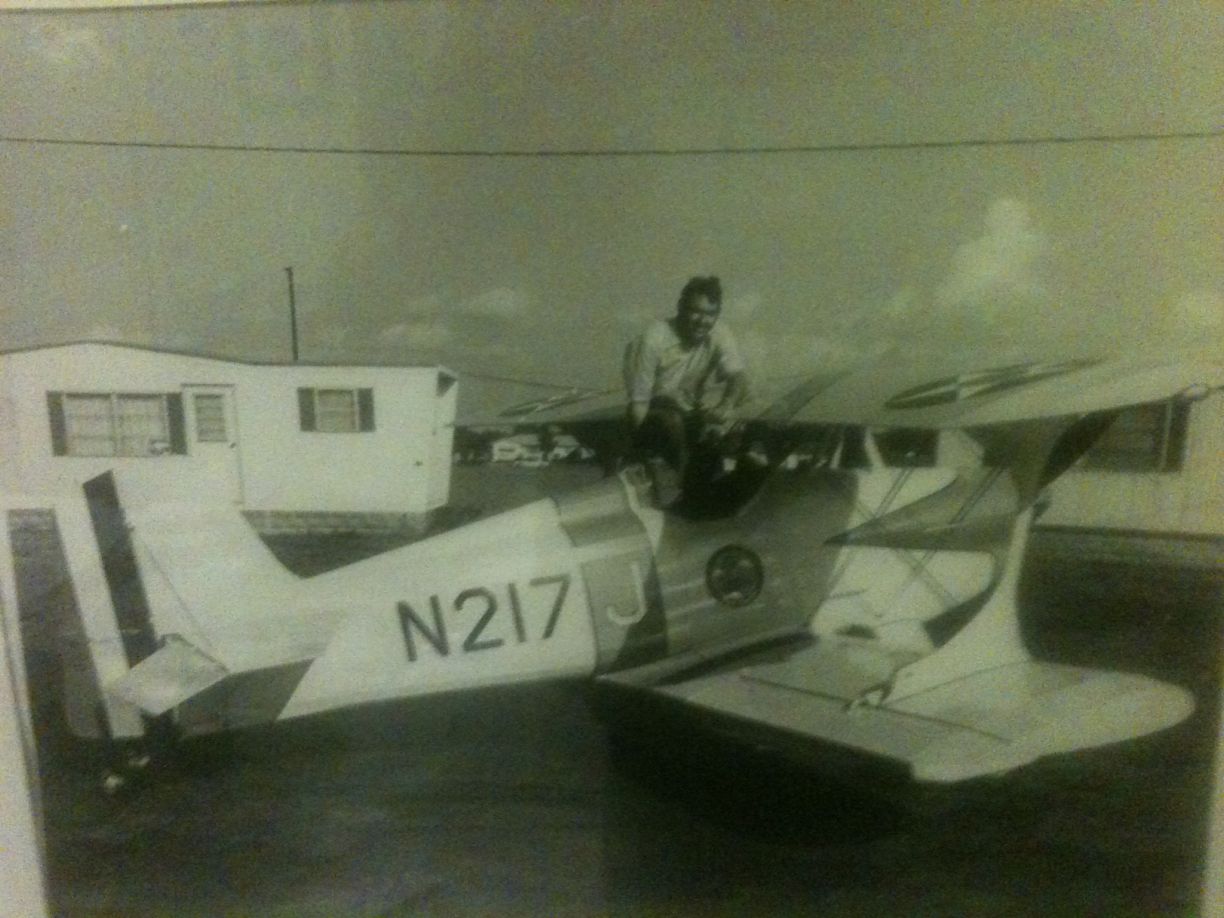Not every museum, especially aviation museums, has the large choice of displays that is afforded the Frontiers of Flight Museum. With many more aircraft in inventory than can be displayed, the opportunity for "rotation" comes into play.
One of the latest aircraft to move into the display area is a pristine Meyer "Little Toot", N217J, Serial Number JDM-3. This particular single place biplane has been in the EAA collection for over 16 years and many old-time EAA people will remember this airplane from the Hales Corners days. Perhaps the pretty logo and nickname on the side of the fuselage will jog your memory-"Petit Papillon" - which means "small butterfly" in French.
Donated to the EAA for viewing in the EAA Air Adventure Museum by James D. Mahoney Family (EAA 9234) of Clayton, MO, suburb of St. Louis, the Little Toot was started in May 1962 and finished in September 1968.
Powered with a Lycoming 0-320A1 A of 150 hp swinging a Hartzell constant speed prop, "Petit Papillon" features a full electrical system including starter, generator, taxi light, landing light, nav lights and radio. Most unusual is a cockpit operated elevator trim and rudder trim.
The full instrument panel includes a gyro horizon directional gyro compass, turn and bank indicator along with the usual flight instruments. The recording tachometer shows 66.13 hours total time since new. Included in the total hours are the two flights while in EAA registry: Tom Poberezny ferried the Little Toot from near St. Louis to Hales Corners and Gene Chase ferried the craft from Hales Corners to Oshkosh. Gene reported the little biplane flew well with good handling characteristics. The empty weight of 1125.5 lbs. and a gross of 1429.5 lbs. makes for a hefty wing loading so you don't close the throttle and glide to a landing. Power is carried all the way to touch down and then the throttle is closed.
The paint scheme is reminiscent of pre-war (WW II) Navy fighters and it really dolls up the already classic lines of the design by George Meyer (1957). Between the wings are eight streamlined flying wires and four streamlined landing wires. Each 5/16 wire is good for 6900 lbs. in tension. At gross weight of 1430 lbs., the wires are good for 38.6 Gs positive and 19.3 Gs negative. One has the distinct feeling the wires may be the last item to fail on the entire Little Toot.
Paul Poberenzy, on behalf the EAA, donated the aircraft to Tommy Meyer and sponsored Tommy the materials to refurbish it. Tommy did the refurbish work and then he donated "Petit Papillon" to the Frontiers of Flight Museum at Love Field in Dallas, TX, on behalf of the EAA.
Be sure and check this "Petit Papillion" over carefully on your next visit to the Frontiers of Flight Museum. Had it not been for the generosity of the James D. Mahoney Family, the EAA and Thomas R. Meyer, you and I would not be so fortunate.
-Article edited by LJ
